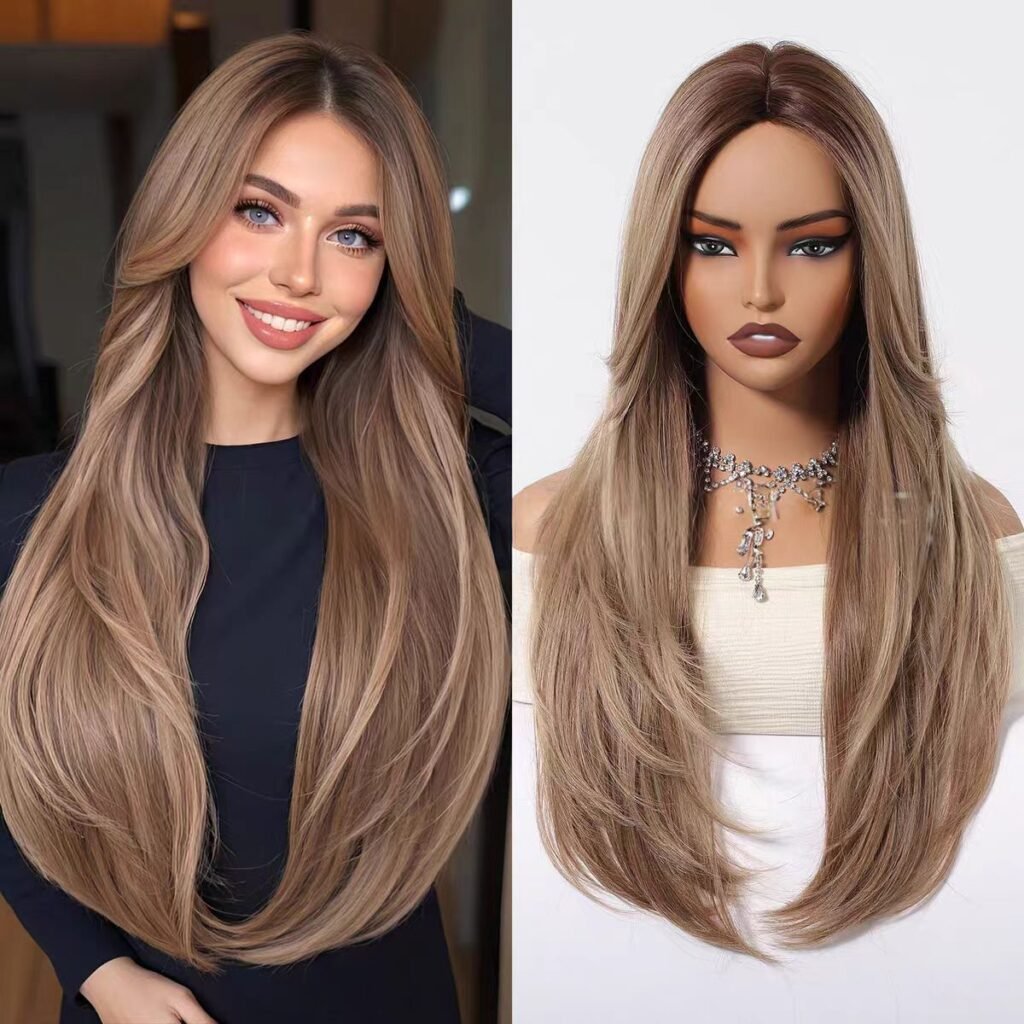
Is Your Ponytail Causing Hair Damage? Tips to Fix It
Why Tying Your Ponytail Too Tight Is Harmful
Tying your ponytail too tight might seem like a quick way to keep your hair neat, but it can cause serious damage over time. Tight ponytails put constant pressure on your scalp and hair roots. This tension can lead to traction alopecia, a condition where hair starts thinning or falling out, especially around your hairline. A study from Johns Hopkins University even found a strong link between tight hairstyles and this type of hair loss.
But that’s not all. Tight ponytails can weaken your hair shafts, causing breakage and split ends. You might also notice scalp irritation or discomfort after wearing a tight ponytail all day. Over time, this stress can make your hair thinner and less healthy. If you’ve been tying your ponytail tightly every day, it’s time to rethink this habit to avoid these common ponytail mistakes.
How to Loosen Your Ponytail Without Sacrificing Style
You don’t have to give up your favorite ponytail style to protect your hair. Small changes can make a big difference. Start by using gentle hair ties like fabric-covered elastics or scrunchies. These reduce the pressure on your hair compared to traditional elastic bands. When tying your ponytail, avoid pulling it too tight. Instead, leave a little slack to ease the tension on your scalp.
Another tip? Switch up your styles. Instead of always wearing a high ponytail, try a low or side ponytail. Protective styles like loose braids or twists can also give your hair a break. And remember, never tie your hair when it’s wet—it’s more fragile and prone to breakage. By making these adjustments, you can avoid bad ponytail habits while keeping your look stylish and your hair healthy.
Choose the Right Hair Ties to Prevent Damage

Why Elastic Bands and Metal Clips Are Problematic
Not all hair ties are created equal. Some, like elastic bands and metal clips, can do more harm than good. Elastic bands, for instance, are notorious for causing hair breakage. Their tight grip and rough material can snag your strands, leading to split ends and even hair loss. If you’ve ever noticed hair stuck to your elastic after removing it, you’ve seen the damage firsthand.
Metal clips might seem like a better option, but they can also cause trouble. If not used carefully, they can pull on your hair or create tension at the roots. This stress weakens your hair over time. Both options can lead to damage, especially if you’re tying the elastic too tight or using clips in the same spot repeatedly. Choosing the right materials can make a big difference in keeping your hair healthy.
Best Hair Ties for Healthy Hair
The good news? There are plenty of hair ties designed to prevent damage. Scrunchies are a fantastic choice. Their soft fabric reduces friction, which helps protect your hair from breakage. Silk hair ties are another excellent option. They’re gentle on your strands and cause the least amount of friction. If you prefer eco-friendly options, plant-based hair ties made from organic cotton or bamboo are perfect. They’re soft, breathable, and kind to your hair.
Here’s a quick comparison of popular hair tie types:
Hair Tie Type | Description | Impact on Hair Health |
|---|---|---|
Synthetic rounds | Plastic-based ties. | Can snag and split hair. |
Plastic coils | Stretchy and bouncy. | May reduce headaches if used well. |
Rubber bands | Plain loops of rubber. | Less damaging if not too tight. |
Plant-based | Organic materials like bamboo. | Gentle and breathable. |
Silk | Natural material with minimal friction. | Causes the least damage. |
When choosing a hair tie, think about your hair tie placement and how often you use it. Opt for fabric-covered ties or scrunchies to keep your hair healthy and strong.
Avoid Tying Up Your Hair When It’s Wet
Why Wet Hair Is More Prone to Breakage
Tying up your hair when it’s wet might seem harmless, but it can actually lead to serious damage. Wet hair is more elastic than dry hair, which means it stretches more easily. While this might sound like a good thing, it actually makes your strands weaker and more prone to snapping or bending. Until your hair dries, it remains in this fragile state, increasing the risk of breakage.
There’s also the issue of hair follicles. When you tie up wet hair, the tension can damage these follicles, leading to long-term hair health problems. Studies show that wet hair has a lower modulus, meaning it’s weaker compared to dry hair. Here’s a quick comparison:
Condition | Measure of Breakage | Conclusion |
|---|---|---|
Wet | Wet modulus | Weaker than dry hair |
Dry | Stress of breakage | Stronger and more resilient |
If you’ve been tying up your hair when it’s wet, it’s time to rethink this habit to protect your strands and scalp.
Safe Styling Tips for Wet Hair
Sometimes, you need to style your hair while it’s wet. That’s okay—as long as you do it safely. Start by avoiding tight hairstyles. Loose buns or braids are better options because they reduce tension on your hair and scalp.
Deep conditioning treatments can also help. These treatments strengthen your hair and make it less prone to damage. If you’re planning to bleach or color your wet hair, use a lower-volume developer and monitor the processing time closely. This minimizes the risk of breakage and irritation.
Heat styling tools should be avoided altogether when your hair is wet. Instead, let your hair air-dry or use a microfiber towel to gently remove excess moisture. If you’re unsure about how to style wet hair safely, consider consulting a professional stylist for tailored advice.
By following these tips, you can keep your hair healthy—even when styling it wet.
Change Your Ponytail Style Often
Problems with Tying Hair in the Same Spot
Putting your ponytail in the same place daily can hurt your hair. It pulls on the same strands and roots repeatedly, causing stress. This can make your hair weaker and more likely to break or thin out. Over time, it might even lead to traction alopecia, which is hair loss from constant pulling.
Some hairstyles are more harmful than others:
High-risk styles: Tight braids, dreadlocks, or extensions on treated hair.
Moderate-risk styles: Wigs or heat-straightened hair, which can weaken strands.
Low-risk styles: Loose buns or natural looks without tension or chemicals.
Changing where you tie your ponytail or choosing looser styles helps. Giving your hair a break from tight hairstyles lets it recover and stay strong.
Fun Alternatives to Regular Ponytails
Bored of the same ponytail every day? Try something different! Loose buns, side braids, or half-up styles are stylish and gentle on your hair. These options reduce pulling and give your hair a rest.
Using better accessories can also help. Scrunchies and silk hair ties are soft and protect your strands. You can also try protective styles like twists or loose braids. These look great and keep your hair safe from damage.
The trick is to avoid tight styles and mix things up. By changing your hairstyle often, you’ll keep your hair healthier and stronger over time.
Brush Your Hair Properly Before Tying It Up
Importance of Brushing for Ponytail Health
Brushing your hair before tying it up might seem like a small step, but it’s actually a big deal for your hair’s health. When you brush properly, you reduce tangles and knots that can lead to breakage. Starting from the ends and working your way up is the best way to avoid pulling and snapping your strands. Brushing from the top down can create more knots, which makes detangling harder and more damaging.
Another reason to brush before styling is to distribute your scalp’s natural oils. These oils keep your hair moisturized and shiny, which helps prevent dryness and split ends. But remember, brushing wet hair is a no-go. Wet strands are weaker and more likely to break. If you must brush wet hair, use a high-quality wet brush designed to be gentle.
Tip: Section your hair while brushing. It makes detangling easier and reduces stress on your strands.
Tips for Detangling Without Causing Damage
Detangling doesn’t have to be a painful or damaging process. Follow these steps to keep your hair safe:
Choose the Right Tools: Use a wide-tooth comb or a detangling brush with flexible bristles.
Prep Your Hair: Apply a detangling spray or leave-in conditioner to add slip and reduce friction.
Work in Sections: Divide your hair into smaller parts to make detangling manageable.
Start at the Ends: Always begin at the tips and work your way up to avoid creating more knots.
Be Gentle: Take your time and use a light hand to prevent unnecessary tension.
Handle Wet Hair Carefully: If your hair is wet, let it air-dry a bit before brushing, or use a microfiber towel to remove excess water.
By brushing properly and detangling gently, you’ll protect your hair from damage and keep it looking its best.
Taking care of your hair while rocking a ponytail is easier than you think. Remember these tips: loosen tight ponytails, use gentle hair ties like scrunchies, and never tie your hair when it’s wet. Brush properly to prevent tangles and switch up your styles to avoid damaging your hair. Small changes can make a big difference. By adopting these habits, you’ll keep your hair healthy and stylish every day!
FAQ
What’s the best way to prevent ponytail damage?
Use soft hair ties like scrunchies, avoid tight styles, and switch up your ponytail placement. These small changes can protect your hair from breakage.
Can I sleep with my hair in a ponytail?
It’s better to avoid it. Sleeping with a ponytail can cause tension and breakage. Try a loose braid or leave your hair down instead.
How often should I change my ponytail style?
Switch it up daily if possible. Changing your style reduces stress on the same strands and helps keep your hair healthier over time.
